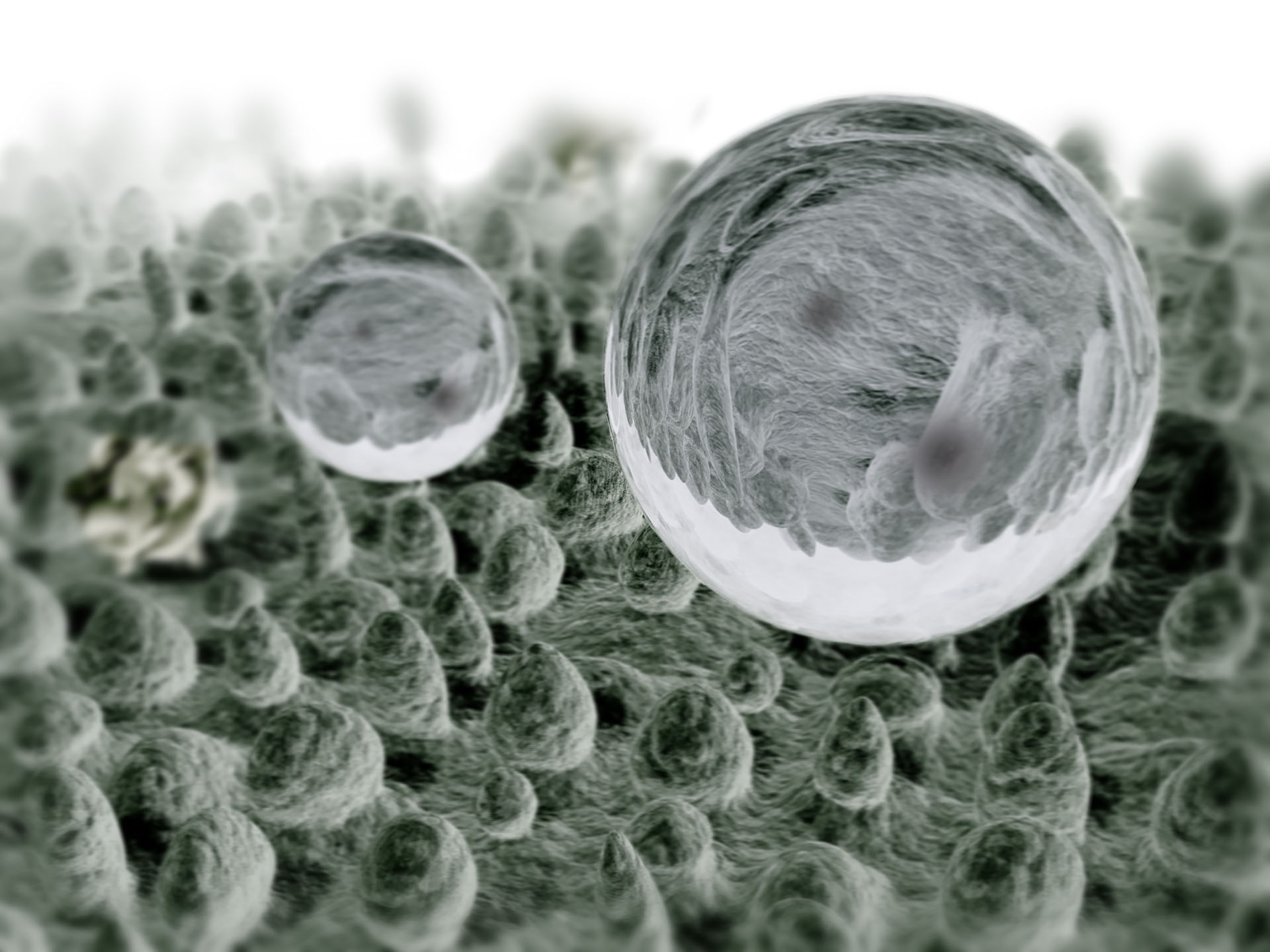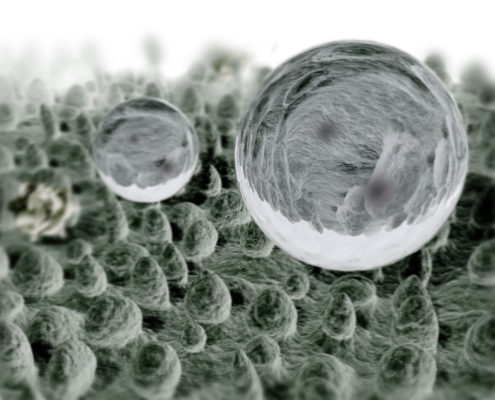Often, scientists and engineers can take their cue from nature. Examples of “superhydrophobicity” in the natural world include bird feathers, insect wings and most famously the lotus leaf. Intuitively we may feel that a smooth surface is better at resisting fluids; yet as this microscopic image of a lotus leaf shows, it actually takes a rough surface, at least on the micro and/or nano level.
While on smooth surfaces droplets tend to spread, on a lotus leaf droplets are pinned onto “micropillars”, creating an almost perfectly round droplet. A very slight inclination of the surface (<10 degrees) is then sufficient to let the droplet roll off.
Researchers developing self-cleaning and water-repellent surfaces are highly interested in this effect, yet developing the required materials is a complex business. The better the “lotus leaf” effect is understood, the easier it becomes to design a surface and know in advance how fluids will behave
on them.
This is one of the specialist subjects of scientists at the Max Planck Institute for Polymer Research in Mainz. Recently, they were able to capture detailed images of a droplet’s movement as it rolls off a superhydrophobic surface. They discovered that the classical equations used for describing the “lotus leaf effect” only offer a very limited picture of what actually takes places. Studying the images, they concluded that instead of focusing on the advancing edge of the droplet, as scientists so far had done, the receding angle is a much better indicator of true superhydrophobicity.
It’s a crucial finding that will help researchers improve their predictions of fluid behavior on various types of liquid-repellent surfaces. The windscreen-wiperless car may not be here tomorrow, but we’re getting ever closer!
 https://cpp.canon/app/uploads/2018/01/elb_0004503c-1.jpg
1280
1920
Michel van der Wal
Michel van der Wal2018-03-05 10:02:382018-03-19 10:41:12The ice age cometh, or not
https://cpp.canon/app/uploads/2018/01/elb_0004503c-1.jpg
1280
1920
Michel van der Wal
Michel van der Wal2018-03-05 10:02:382018-03-19 10:41:12The ice age cometh, or not










